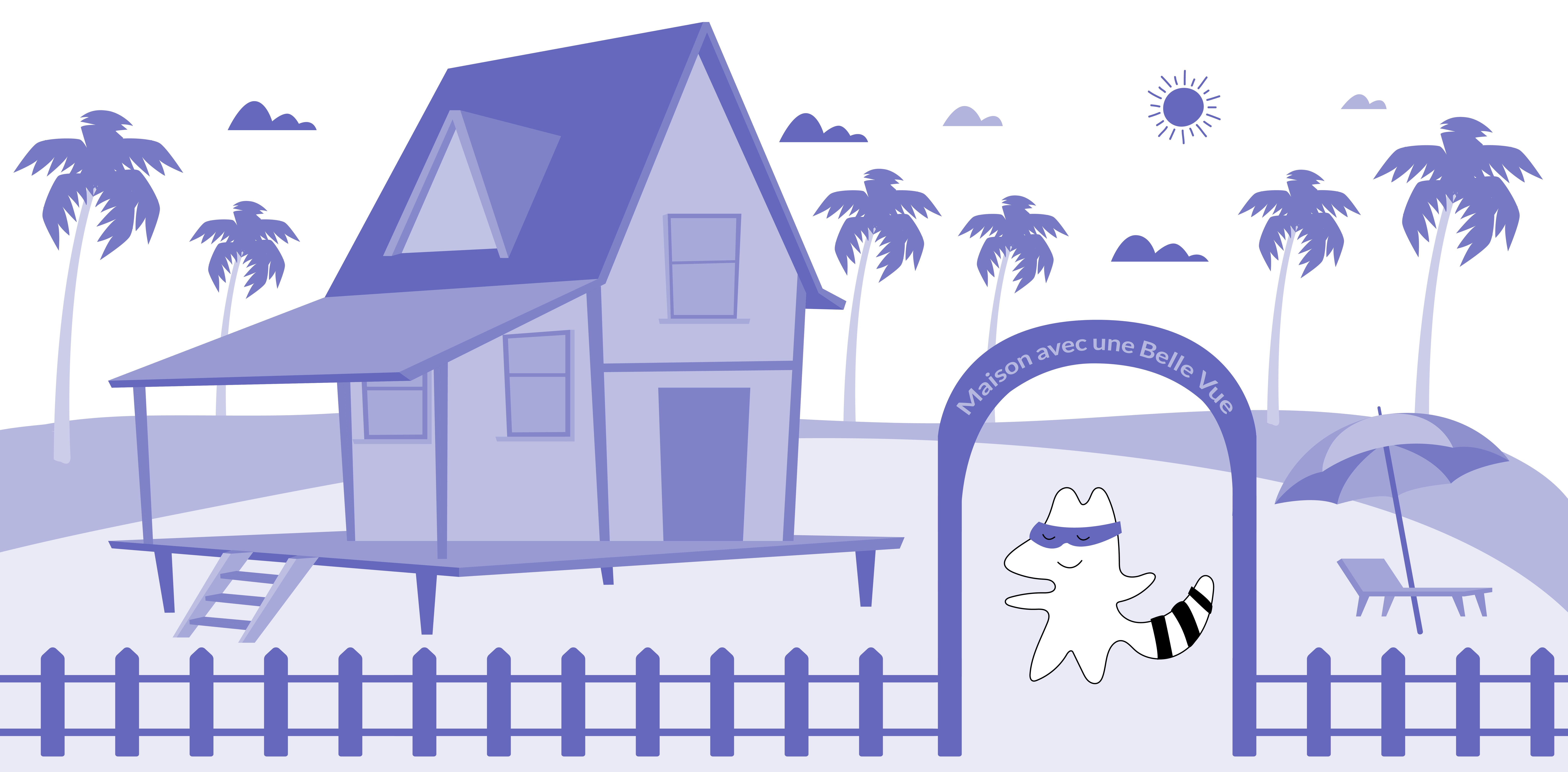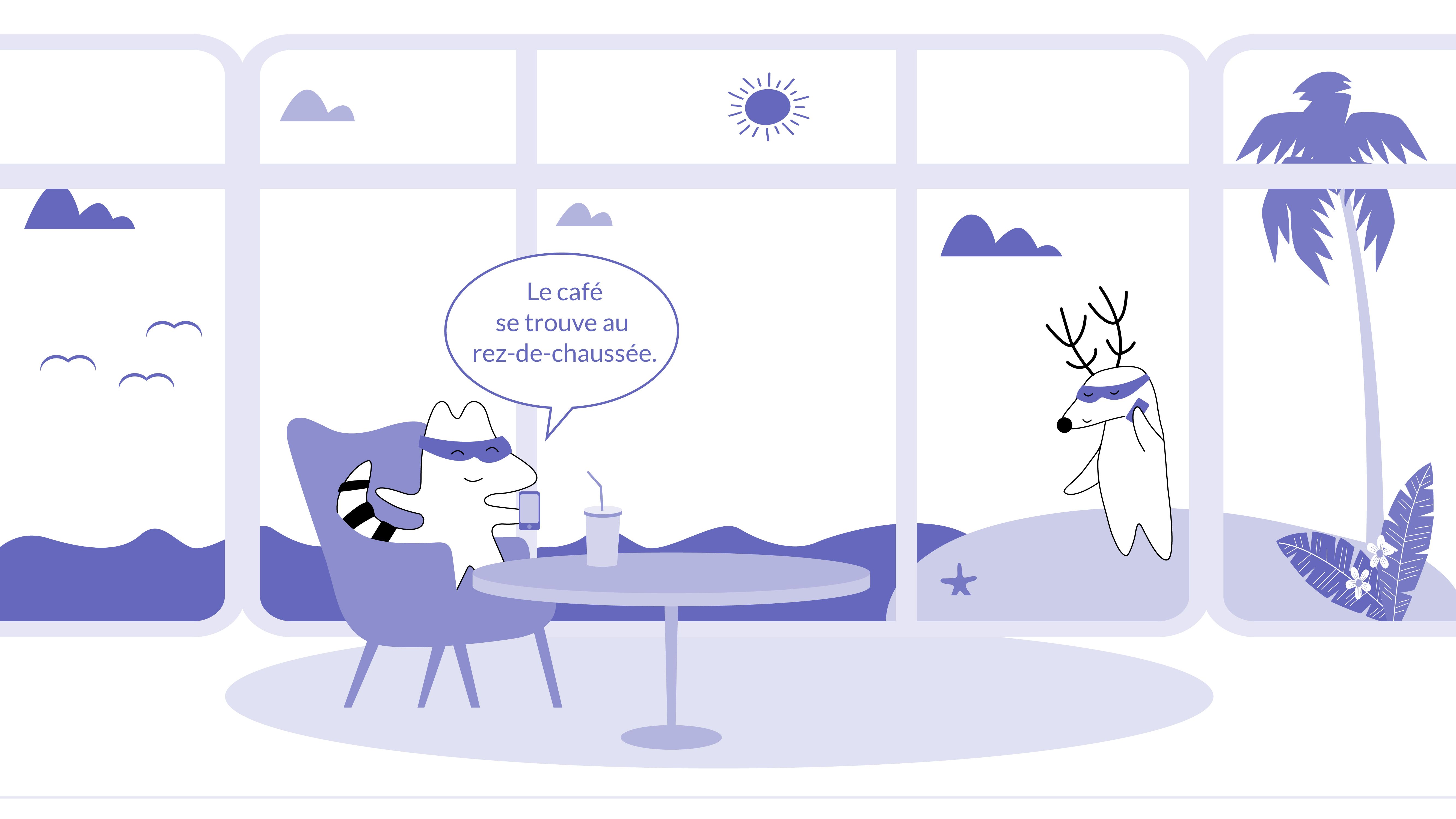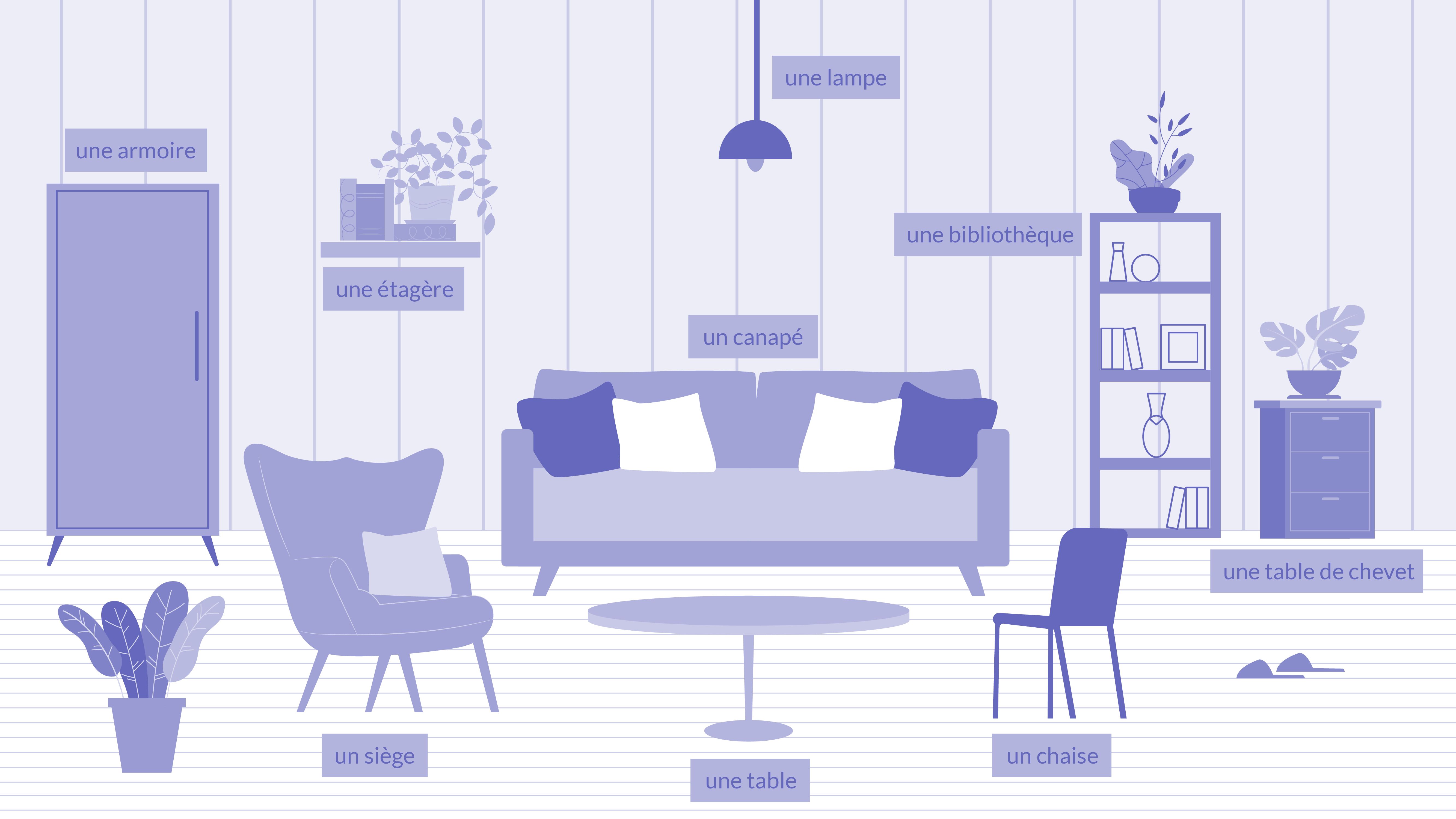
In the cozy comfort of a home, every room tells a story, and every piece of furniture adds to its character. As we walk you through the corridors of la maison, translating to “the house” in French, you'll learn French house vocabulary for each of its elements, creating the vivid image of a home in your linguistic repertoire.
As we navigate through the intricate architecture of the French language, we’ll share the names of different rooms, house parts, and furniture items, helping you to converse more confidently and comprehensively in French.
Whether you are learning French for personal interest, for travel purposes, or as an academic endeavor, these terms will be a valuable addition to your vocabulary. Stay tuned, and let's open the doors to la maison together!
Learn French with Langster
La Maison: The French Word for “House”
The most common way to refer to a house in French is by maison. This word is feminine, so it is accompanied by the definite article la, which means "the" in English.
French
English
La maison de mes parents est grande.
My parents' house is big.
Nous avons acheté une belle maison à la champagne.
We bought a beautiful house in the countryside.
Je vais nettoyer toute la maison.
I’m going to clean the whole house.
Il y a deux maisons au bout de notre rue qui ont les plus beaux jardins.
There are two houses at the end of our street that have the most beautiful gardens.
When talking about your home, you can use either of these terms:
French
English
ma maison
my house
chez moi
my home
La maison can also refer to a building or structure in general, not just a house. For example:
French
English
la maison d'opéra
opera house
la maison blanche
the White House
In turn, the term maisonnée is the equivalent of the English word “household.”
French
English
Il organise la maisonnée.
He organizes the household.
If you live in the apartment, the French equivalent of it would be un appartement. Here’s how to use it in a sentence:
French
English
J'ai vendu mon apartment.
I sold my apartment.
L'appartement de Luc est près de la gare.
Luc's apartment is near the train station.
When it comes to different floors of a building, the French have a unique way of designating them.
What you know as the first floor in English would be the ground floor in French, known as le rez-de-chaussée.
French
English
La librairie est au rez-de-chaussée.
The bookstore is on the ground floor.
The first level above it. What would be referred to as the "second floor" in American English is called le premier étage, or the first floor, in French.
French
English
Mon appartement est au premier étage.
My apartment is on the first floor.

Room Names in French
Just like in English, there are various rooms in a house that serve different purposes. French vocabulary for the various rooms in a house is incredibly descriptive and often poetic.
Let's take a look at some of the most common French house terms you might find in la maison:
| French Word | English Equivalent | Example | Translation |
|---|---|---|---|
| la cuisine | kitchen | Je prépare le dîner dans la cuisine. | I prepare the dinner in the kitchen. |
| la chamber | bedroom | Ma chambre a une vue magnifique sur le jardin. | My bedroom has a beautiful view of the garden. |
| le salon | living room | Nous regardons la télévision dans le salon. | We watch television in the living room. |
| la salle de bain | bathroom | La salle de bain est à côté de ma chamber. | The bathroom is next to my bedroom. |
| les toilettes | toilet | Où sont les toilettes s’il vous plaît? | Where's the restroom, please? |
| la salle à manger | dining room | Nous prenons généralement nos repas dans la salle à manger. | We usually have our meals in the dining room. |
| le jardin | garden, backyard | Notre jardin est plein de belles fleurs en été. | Our garden is full of beautiful flowers in summer. |
| French Word | English Equivalent | Example | Translation |
|---|---|---|---|
| la cuisine | kitchen | Je prépare le dîner dans la cuisine. | I prepare the dinner in the kitchen. |
| la chamber | bedroom | Ma chambre a une vue magnifique sur le jardin. | My bedroom has a beautiful view of the garden. |
| le salon | living room | Nous regardons la télévision dans le salon. | We watch television in the living room. |
| la salle de bain | bathroom | La salle de bain est à côté de ma chamber. | The bathroom is next to my bedroom. |
| les toilettes | toilet | Où sont les toilettes s’il vous plaît? | Where's the restroom, please? |
| la salle à manger | dining room | Nous prenons généralement nos repas dans la salle à manger. | We usually have our meals in the dining room. |
| le jardin | garden, backyard | Notre jardin est plein de belles fleurs en été. | Our garden is full of beautiful flowers in summer. |

House Parts
Apart from rooms, there are also different parts of a house that play an important role in its structure and functionality.
Here are some common house parts and their corresponding French words:
French
English
le toit
roof
la cheminée
the chimney
la porte
door
le tapis de porte
the doormat
la sonnette
the doorbell
la fenêtre
the window
une pièce, une salle
room
le porche, la véranda
porch
la boîte aux lettres
the letter box
l'escalier
staircase, stairs
le balcon
balcony
le garage
the garage
le sous-sol
the basement
la cave
the cellar
le grenier
the attic

Furniture Vocabulary List
Furniture is an important part of any house, adding functionality and style to different rooms. Here are some common furniture items and their corresponding French words:
French
English
un meuble
piece of furniture
des meubles
furniture
un lit
bed
une table
table
un canapé
sofa
une chaise
chair
un bureau
desk
une étagère
(book)shelf
des étagères
shelves
une lampe
lamp
une armoire, un placard
closet
une commode
dresser
un miroir, une glace
mirror
The placement of furniture in a room is often referred to using prepositions the following French prepositions:
French
English
sure
on
sous
under
à côté de
next to
derrière
behind

How to Master New Vocabulary
Learning new vocabulary may seem daunting, but some tips can help you remember them more easily. Here are a few quick techniques you can incorporate into your learning process:
- Use flashcards to practice and quiz yourself regularly.
- Associate new words with images or objects to create visual connections.
- Create sentences using the new words to understand their usage better.
- Practice speaking out loud to improve pronunciation.
- Download our Langster app to pick up proper phrasing and learn French house terms in context.
- Take breaks in between studying to give your brain time to process the new information.
Lastly, don't be afraid to make mistakes as you learn new words — it's all part of the learning process!
The Bottom Line
As we come to the end of our journey through la maison, we hope you have found this guide useful in expanding your French vocabulary.
Whether you're considering living in France full-time or just curious about how French households work from within, with these room names and other house-related terms at your disposal, you can now open the doors to la maison and easily navigate conversations about houses — and even describe your own living space in French. À bientôt!
Learn French with Langster









